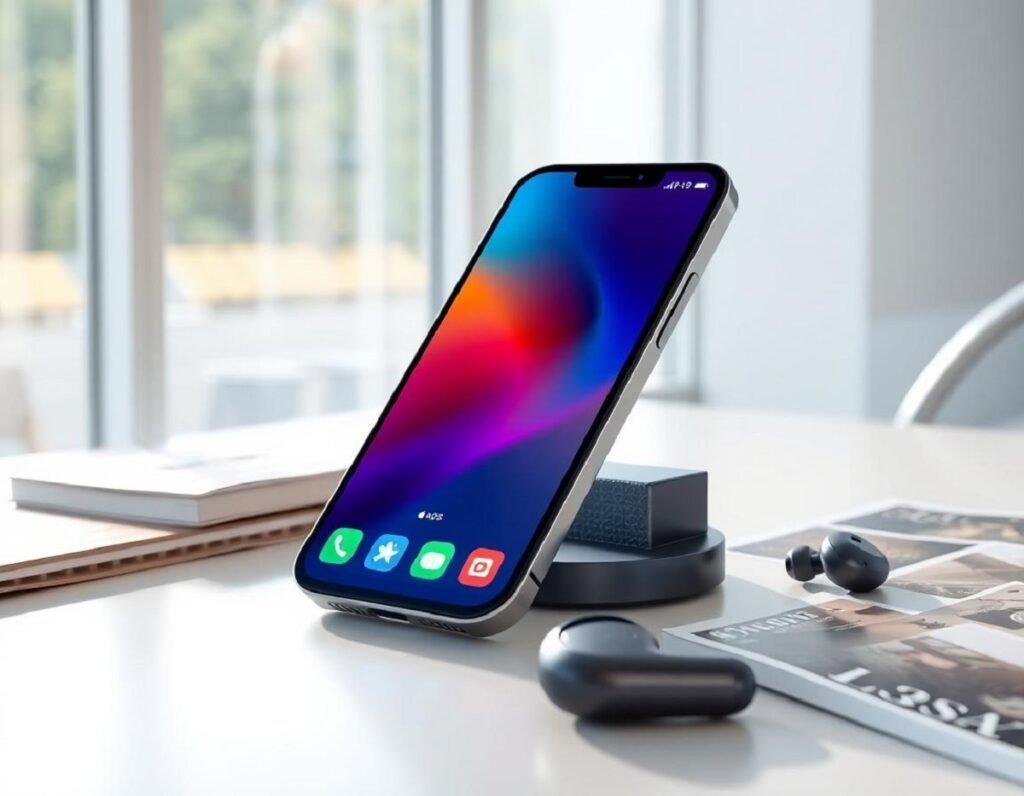Welcome to gadgeteval.com,
where we keep it real about phones. What can I help you with today?
Hi, I’m looking for a cheap iPhone.
Well, the iPhone SE isn’t around anymore, but we have iPhone 14 models. That should work just fine.
Actually, I’d like a small, affordable iPhone with a 48-megapixel camera.
In that case, the iPhone 15 might be a better fit.
Wait, I want a small, low-cost iPhone with a 48-megapixel camera and Apple Intelligence.
Alright, you’d need an iPhone 15 Pro for those features. We have some refurbished units available.
I have exactly $600 for a small iPhone with a 48-megapixel camera, Apple Intelligence, an OLED screen, Face ID, and the Action Button.
The iPhone 15 Pro covers all that.
Also, I don’t like high refresh rates, so it needs to be 60 hertz. And I don’t want MagSafe.
Who exactly are you?
Here’s the new iPhone 16e for 2025. This is no longer a true budget phone. Past SE models were easy to recommend because of their low prices, often $399 or $429. The new 16e starts at $599, and upgrading storage is still expensive. The model I tested came in at $900. So even though this is the cheapest new iPhone you can buy, it’s not really cheap anymore.
The SE used to be the go-to suggestion for kids, parents, or anyone getting their first iPhone. It was always the lowest-priced option. But the big price jump changes things. After using the 16e for a week, I’m struggling to think of the ideal buyer for it.
For years, Apple made the SE affordable by using old parts. The 16e keeps that trend, borrowing the body from the iPhone 14. You get aluminum sides, a flat design, USB Type-C, and IP68 water resistance. Apple added the Action Button to the side too. The front still has a 6.1-inch screen with a notch and Face ID, looking much more up-to-date than the last SE.
The display is not as bright as flagship models, so it’s harder to see in sunlight. It still runs at 60 hertz, which feels outdated. For most daily use, it looks fine, but this is where the compromises start.
The iPhone 16 line now includes the 16e, 16, and 16 Pro models. To reach the 16e’s price, Apple left out some features. Some cuts are minor, some sting a bit more.
The 16e runs on the new A18 chip, the same one in the top iPhone 16, but with one less GPU core. This “binned” chip performs nearly as well as the full version and still puts the 16e near the top of its price class for power.
Color choices are limited to matte black and matte white, which makes the phone look simple and maybe a bit dull. The camera bump is smaller, which is a nice touch, but there are no bright options like Product Red anymore. If you want color, you’ll need a case.
MagSafe is missing from the 16e. While the last SE didn’t have it either, that was years ago. MagSafe is now a big part of the iPhone experience. Instead, the 16e uses first-generation Qi wireless charging, topping out at 7.5 watts. There are no magnets, so alignment can be tricky and charging can be slow. If you want MagSafe, you’ll need a case with magnets.
Now for the camera.
The 16e has a single 48-megapixel camera. While it’s the same resolution as the main cameras on the 16 and 16 Pro, the sensor is smaller and stabilization isn’t as strong. Photos look different — less background blur and softer in low light. Daytime shots have typical iPhone colors and sharpness, but image quality drops off at night. There’s no secondary lens, so you lose out on cinematic mode, spatial video, and macro shots. For the price, the camera is decent, but if photography is your priority, other models offer more.
Other missing features include Wi-Fi 6E and 7 support and no Ultra Wideband, so you can’t use precision finding for AirTags. The Action Button is there, but it doesn’t offer camera control.
The 16e is the first iPhone with Apple’s C1 modem, designed in-house after Apple bought Intel’s modem business. You get 4G, 5G, GPS, and satellite support. In daily use, there’s not much difference from Qualcomm modems, which is a good thing. There’s no millimeter wave 5G, but few people need it. The real benefit is efficiency. The new modem is smaller and uses less power, which means the 16e has space for a bigger battery. Battery life is strong, similar to the iPhone 16 Pro.
Launching the C1 modem in the 16e makes sense for Apple. They can test it with lower stakes before moving to higher-volume models. It also opens options for thinner phones in the future.
Stepping back, the iPhone 16e seems designed to get you looking at the next model up. It hooks you with the lower price, but the standard 16 offers more features for not much more money. The real issue here is the price. With tariffs, new chip development, added RAM, and inflation, costs have climbed. Apple might raise prices on the iPhone 17 as well.
This feels like the same problem Google’s Pixel a-series ran into. A slightly older flagship on discount was usually the better choice. Right now, you can get a refurbished iPhone 15 Pro for $600, and it beats the 16e in almost every way. The 15 Pro has a brighter, smoother screen, triple cameras, the same battery life, and supports Apple Intelligence. If you’re shopping at this price, start with the 15 Pro.
Apple’s website for the 16e compares it only to the iPhone 12, 12 Mini, 11, and older SE models. If you’re upgrading from any of those, the 16e is a nice step up with a modern design and better performance. But at $599, it doesn’t deliver the same value the old SE models did.
